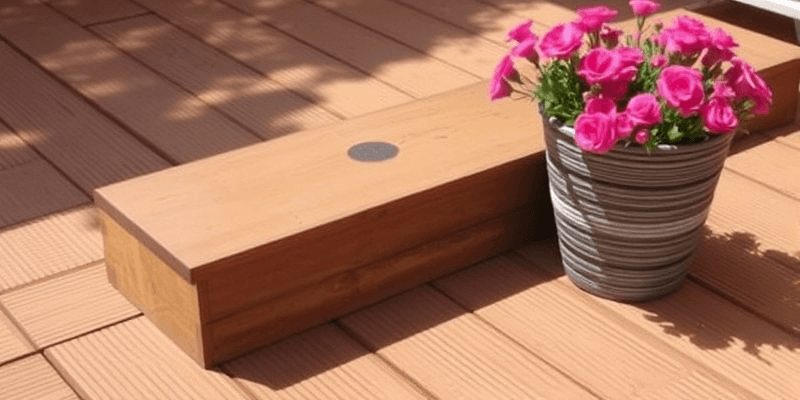Guide to Maintaining Softwood Decking Boards: Cleaning and Protective Treatments
Introduction
Softwood decking boards, crafted from trees such as pine, cedar, and redwood, offer a natural beauty and charm that can enhance any outdoor space. However, like any wooden structure exposed to the elements, they require regular maintenance to preserve their aesthetic appeal and structural integrity. This guide will cover essential cleaning techniques, protective treatments, and tips for maintaining softwood decking boards, ensuring they remain a beautiful and functional addition to your home for years to come.
Understanding Softwood Decking
Softwood decking is often chosen for its affordability, ease of installation, and sustainability. Unlike hardwoods, softwoods absorb moisture more readily, which can lead to warping, splitting, and decay if not properly maintained. Recognizing the unique characteristics of softwood is the first step in developing an effective maintenance routine.
Regular Maintenance Practices
Maintaining your softwood decking involves more than just a seasonal cleaning. A consistent routine is essential to protect the wood from the damaging effects of weather, dirt, and grime.
1. Cleaning Your Deck
Frequency
It is recommended to clean your softwood deck at least twice a year—once in spring and once in autumn. This helps to remove debris that can trap moisture and promote mold growth.
Materials Required
– Long-handled broom or leaf blower
– Hose or pressure washer
– Soft-bristle brush
– Non-toxic deck cleaner or soap
– Bucket
– Protective equipment (gloves, goggles)
Cleaning Process
1. **Clear the Surface**: Start by removing furniture, potted plants, and any other items from your deck. Sweep away leaves, dirt, and debris using a broom or leaf blower.
2. **Assemble your Cleaning Solution**: Mix a non-toxic deck cleaner with water in a bucket as per the manufacturer’s instructions. Avoid using bleach or harsh chemicals, as they can damage the wood.
3. **Scrub the Deck**: Dip a soft-bristle brush into the cleaning solution and scrub the surface of the deck, working in the direction of the wood grain. Pay particular attention to corners and areas under railings.
4. **Rinse Thoroughly**: Once the entire surface has been scrubbed, rinse the deck with clean water using a hose. If you’re using a pressure washer, adjust it to a low setting (no more than 1500 psi) to avoid damage to the wood.
5. **Check for Repairs**: After cleaning, inspect your deck for any signs of damage. Look for splinters, loose boards, or cracks that may need repair.
2. Protective Treatments
Why Protection is Important
Applying protective treatments is crucial for prolonging the life of your softwood decking. These treatments can prevent moisture penetration, UV damage, and insect infestation while enhancing the wood’s natural beauty.
Types of Protective Treatments
– **Sealants**: sealants create a protective layer on the surface of the wood, preventing water absorption and reducing the risk of mold growth. Look for water-repellent sealants to ensure maximum protection.
– **Stains**: Stains not only enhance the appearance of the wood but also offer UV protection. They penetrate the wood and help to maintain its color while allowing the natural texture to shine through. Semi-transparent stains provide a good balance between color and visible wood grain.
– **Wood Preservatives**: These are chemicals designed to prevent decay and insect damage. They can be applied before the sealing or staining process for added protection.
Application Process
1. **Choose the Right Day**: Select a day with low humidity and no forecast for rain to apply your protective treatment. Ideally, temperatures should be between 50°F and 90°F.
2. **Prepare the Surface**: Ensure your deck is completely dry after cleaning. This can take 24-48 hours depending on the weather.
3. **Apply the Treatment**: Use a brush, roller, or sprayer to apply the sealant or stain. Work in sections, starting from one end of the deck and moving systematically to the other end. Follow the manufacturer’s recommendations for the number of coats and drying times between applications.
4. **Allow for Curing**: After applying your protective treatment, allow adequate drying or curing time as indicated by the product instructions before replacing furniture on the deck.
Additional Tips for Deck Care
1. Monitor Weather Conditions
Pay attention to extreme weather conditions. Heavy rain, snow, and heat can accelerate wear on your decking. If you anticipate harsh weather, consider covering your deck or using furniture as a windbreak.
2. Use Furniture Pads
When placing outdoor furniture on your deck, use protective pads to prevent scratches and indentations in the wood surface.
3. Trim Vegetation
Regularly trim back trees and shrubs that overhang your deck. This reduces the amount of debris that can accumulate and minimizes shade, which can lead to mold growth.
Conclusion
Maintaining softwood decking boards is essential for preserving their beauty and durability. Regular cleaning, protective treatments, and careful monitoring can help you avoid costly repairs down the line while ensuring your deck remains a safe and inviting space for relaxation and entertainment. By investing the time and effort into proper maintenance, you can enjoy the natural charm of softwood decking for years to come.
References
– [American Wood Council – Caring for Wood Decks](https://www.awc.org/caring-for-wood-decks)
– [House Logic – Deck Maintenance 101](https://www.houselogic.com/organize-maintain/deck-maintenance/)
– [This Old House – How to Clean a Deck](https://www.thisoldhouse.com/decks/how-to-clean-a-deck)

